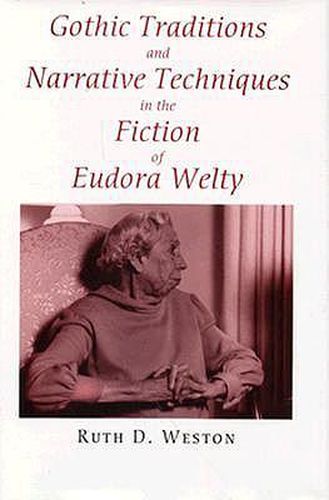Readings Newsletter
Become a Readings Member to make your shopping experience even easier.
Sign in or sign up for free!
You’re not far away from qualifying for FREE standard shipping within Australia
You’ve qualified for FREE standard shipping within Australia
The cart is loading…






In this study, Ruth D. Weston probes the whole of Eudora Welty’s work to reveal the writer’s close relationship to the gothic tradition. Specifi cally, Weston shows how Welty employs the theme of enclosure and escape and settings that convey a sense of mystery, gothic adaptations both, to create certain narrative techniques in her fi ction.
Differentiating at the outset between the Gothic genre as opposed to elements of the gothic tradition, and acknowledging both critics’ and Welty’s own reluctance to link her writing with the former, Weston plunges in and brilliantly discloses the relationship Welty’s writing has to both, and in doing so describes a rich literary heritage to which Welty belongs. She shows how the tradition of adapting European Gothic conventions to American settings has come down to us through writers such as Hawthorne, particularly through the short story, and continues in Welty’s fi ction.
Among Welty’s narrative techniques that Weston discusses are plot structures built around betrayal and captivity, reversal of characters’ gender roles, a tone sometimes similar to that of gothic genres such as the fairy tale or ghost story, and affective settings in
gothic spaces
such as the woods along the Natchez Trace. These techniques, Weston explains, help Welty in illustrating restrictions placed on the individual’s search for selfhood by human relationships, cultural expectations, and memory.
In addition to examining the texts themselves, Weston draws on Welty’s critical and theoretical writings and her letters and other materials in archival collections. She also gleans insights from the work of contemporary narrative theorists, feminist critics, and recent commentators on the Gothic. In the course of her presentation, she offers some excellent new assessments of Welty’s relation to the
female Gothic
and the
Southern Gothic
and to William Faulkner and Jane Austen.
This book is one of the most informed studies to date of Welty’s relation to the literary mainstream of the nineteenth and twentieth centuries. Welty scholars as well as general readers of American and southern literature will gain a deep appreciation for Welty’s imaginative and original response to the Gothic literary tradition.
$9.00 standard shipping within Australia
FREE standard shipping within Australia for orders over $100.00
Express & International shipping calculated at checkout
In this study, Ruth D. Weston probes the whole of Eudora Welty’s work to reveal the writer’s close relationship to the gothic tradition. Specifi cally, Weston shows how Welty employs the theme of enclosure and escape and settings that convey a sense of mystery, gothic adaptations both, to create certain narrative techniques in her fi ction.
Differentiating at the outset between the Gothic genre as opposed to elements of the gothic tradition, and acknowledging both critics’ and Welty’s own reluctance to link her writing with the former, Weston plunges in and brilliantly discloses the relationship Welty’s writing has to both, and in doing so describes a rich literary heritage to which Welty belongs. She shows how the tradition of adapting European Gothic conventions to American settings has come down to us through writers such as Hawthorne, particularly through the short story, and continues in Welty’s fi ction.
Among Welty’s narrative techniques that Weston discusses are plot structures built around betrayal and captivity, reversal of characters’ gender roles, a tone sometimes similar to that of gothic genres such as the fairy tale or ghost story, and affective settings in
gothic spaces
such as the woods along the Natchez Trace. These techniques, Weston explains, help Welty in illustrating restrictions placed on the individual’s search for selfhood by human relationships, cultural expectations, and memory.
In addition to examining the texts themselves, Weston draws on Welty’s critical and theoretical writings and her letters and other materials in archival collections. She also gleans insights from the work of contemporary narrative theorists, feminist critics, and recent commentators on the Gothic. In the course of her presentation, she offers some excellent new assessments of Welty’s relation to the
female Gothic
and the
Southern Gothic
and to William Faulkner and Jane Austen.
This book is one of the most informed studies to date of Welty’s relation to the literary mainstream of the nineteenth and twentieth centuries. Welty scholars as well as general readers of American and southern literature will gain a deep appreciation for Welty’s imaginative and original response to the Gothic literary tradition.